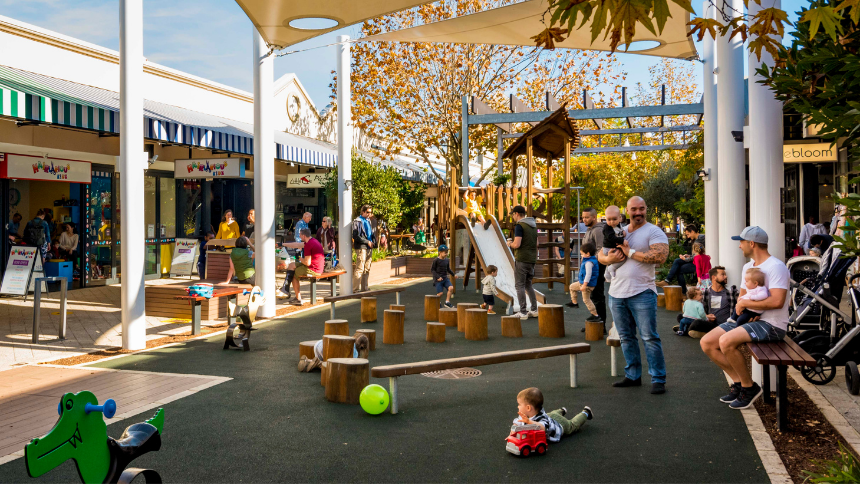
In today’s retail landscape, creating a sense of community within a physical store is becoming increasingly important. With the ever-present influence of online shopping, brick-and-mortar retailers need to offer experiences that e-commerce cannot replicate. One powerful way to do this is by incorporating dedicated community spaces into retail design.
A community space could take the form of a cafe, wine bar, casual dining area, or simply a lounge spot with comfy seating and free wifi. These spaces serve as modern-day “third places” beyond home and work where people can gather. By fostering a welcoming environment for people to connect, retailers create “stickiness” that drives foot traffic and loyalty (SOURCE).
Or, it could be a pocket park with spaces designed for picnicking or enjoying the outdoors while taking a break from shopping (we saw this in action with our projects at Coastal North in South Carolina and Wattstown, Indiana–both included outdoor park spaces as part of the master plan for the community).
Humans are social creatures who crave feelings of belonging. When you provide an inviting space for community within a retail store, you allow shoppers to turn transactions into experiences shared with friends, classmates, clubs, and other social circles. This transforms a store into a hub for face-to-face interaction missing from the online world.
The benefit?
People form connections with the community cultivated in a space and therefore form an attachment with the brand as well. This psychologically makes them more loyal customers and ambassadors. The community spaces become anchors, providing compelling reasons to return again and again.
The bottom line benefit for retailers is elementary–the more often customers come to a store and the longer they stay, the more money a business can make. These efforts are only enhanced through loyalty programs, special offers, and strategically displayed retail sections.
At the end of the day, investing in building community demonstrates a ocus on delivering exceptional customer experiences over just product sales. With endless product options available online, smart retailers must differentiate through hospitality and placemaking. Don’t just sell things, create community spaces that turn routine shopping trips into memorable experiences customers crave.
Implementing purposeful community spaces shows patrons you prioritize their social needs and desires to connect. You provide comfort and belonging that e-commerce can never compete with. When executed thoughtfully, these spaces become powerful assets for driving footfall, loyalty, dwell times, and overall spending. For today’s retailers, building community is the key to long-term success.


